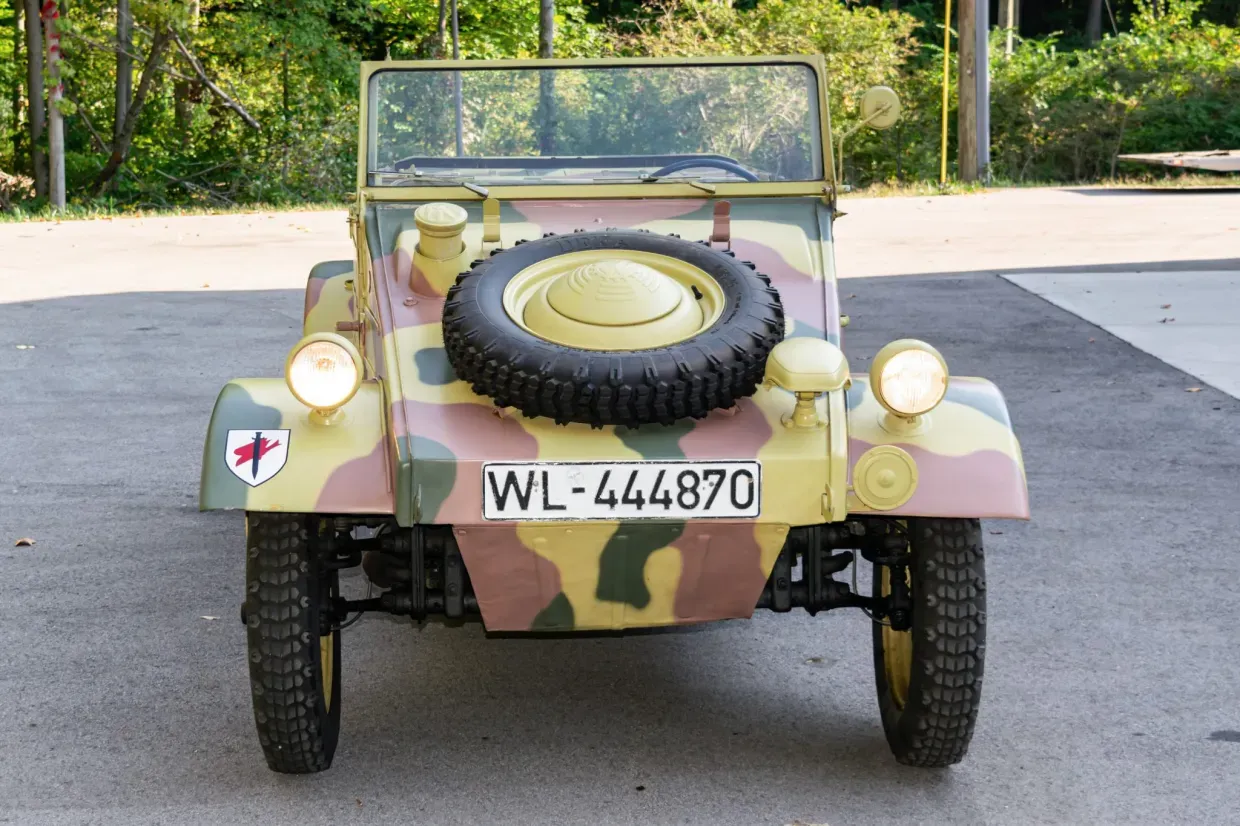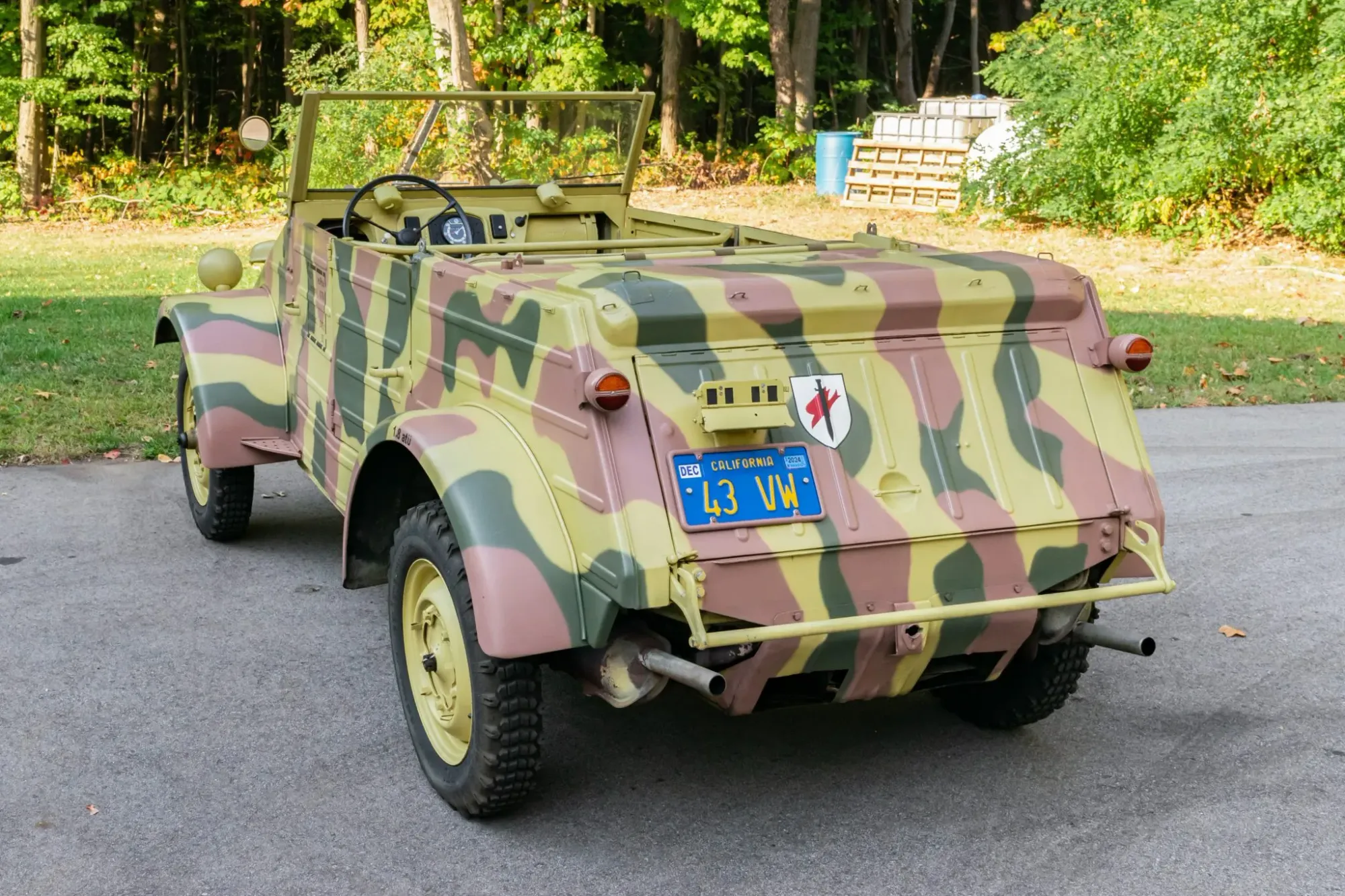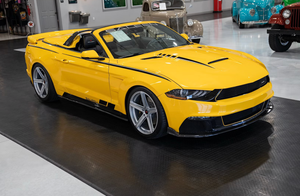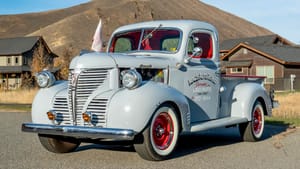A restored 1943 Volkswagen Kübelwagen—Germany’s WWII counterpart to the Willys Jeep—is for sale in Michigan, powered by a later 1.2-liter engine.
Few wartime vehicles are as instantly recognizable—or as historically significant—as the Volkswagen Kübelwagen. Designed in 1938 by Ferdinand Porsche as Germany’s lightweight military vehicle, the Kübelwagen served as the Nazi equivalent to the American Willys Jeep. This particular example, a 1943 Type 82, has been restored and preserved in the United States since the early 1970s, and it’s now up for sale in Saugatuck, Michigan.

Originally built for simplicity and versatility, the Kübelwagen used a modified Beetle chassis, a flat underbody for ground clearance, and air-cooled power ideal for varied climates—from the North African desert to the Eastern Front. Early 985cc engines gave way to the later 1.2-liter flat-four seen here, offering modest but reliable power through a four-speed manual gearbox.
This restored example reportedly underwent a refurbishment in Germany in the 1960s before being imported to the U.S. in 1972. It now rides on a 1959 Type 1 chassis with a limited-slip transaxle, combining authenticity with improved drivability. The vehicle retains key wartime details such as Notek blackout lights, a folding windshield, canvas top, and period-correct 16-inch wheels wrapped in reproduction military tires.

Inside, the Kübelwagen is spartan by design—bare metal, simple gauges, and seating for four troops or passengers. But what it lacks in comfort, it makes up for in originality and historic charm. The listing also includes period documentation and a California 1943 title, adding legitimacy to its provenance.
While the Kübelwagen was never meant to rival the Jeep in off-road agility, Allied evaluations during the war praised its fuel economy and surprising terrain capability despite lacking four-wheel drive. More than 50,000 were produced by the end of WWII, but few survived intact, making this restored 1943 example a rare find for serious collectors.
It’s an artifact of both engineering ingenuity and historical complexity—one that tells the story of how a humble people’s car evolved into a wartime machine.




